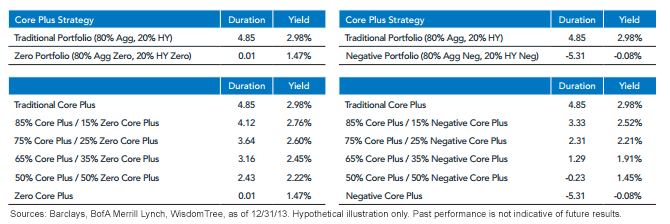ETF Strategy for Rising Rates Reduce Portfolio Duration
Post on: 1 Июль, 2015 No Comment

By Matt Tucker, CFA , iShares Head of Fixed Income Strategy
In my last post. I highlighted sector rotation as a potential ETF strategy for a rising interest rate environment. This time, I’d like to focus on another common strategy for helping to protect a portfolio against rising rates: Reducing the duration, or interest rate risk, of a portfolio.
This has been a popular strategy so far this year – flows into fixed income ETFs year-to-date have been primarily into shorter duration ETFs as investors look to cut interest rate risk in their portfolios. Through April 10 th. $10.2 billion has been allocated to short duration ETFs while $2.8 billion has been redeemed from longer duration ETFs. Clearly investors are voting with their dollars [see also How To Pick The Right ETF Every Time ].
This strategy can be accomplished by selling longer duration investments in favor of shorter duration ones, or by just adding shorter duration investments to bring down average portfolio duration. As longer duration investments generally offer more yield, such a move will generally result in a lower yielding portfolio. Investors who position in this way believe that the yield they give up will be more than made up for by avoiding the price loss that a longer duration portfolio would experience in a rising interest rate environment.
Yield curve positioning is a strategy that many institutional investors employ to position for rising rates. But using fixed income ETFs, pretty much any investor can make similar changes to their portfolios. Within different ETFs, investors can now get access to the entire yield curve or just the short maturity portion. For example, the iShares Treasury Bond ETF (GOVT, A- ) holds US Treasury bonds from 1-30 years, while the iShares 1-3 Year Treasury Bond ETF (SHY, A ) is just the short end of the curve. The table below has ETF options for buying the whole curve or short duration funds within investment grade credit. Treasuries. municipal bonds and Treasury Inflation Protected Securities (TIPS).
Investors should keep in mind that moving to shorter duration bonds may come with some unintended consequences. Since shorter maturity bonds have a lower yield, the returns may not keep pace with inflation. After inflation, which has been trending around 2%, investors may be getting negative levels of yield. Also, for investors with income needs, a short duration bond portfolio may not generate enough yield to achieve their goals [also check out the 2013 ETFdb Portfolio ].
An additional challenge with trying to position for rising interest rates is that all rates do not move in tandem, short term interest rates can move independently from intermediate and longer term interest rates. Strategies that appear to reduce interest rate risk could actually underperform in a rising interest rate environment. How you go about reducing interest rate risk, and which interest rates you protect yourself against, will ultimately determine the success of your strategy. I will talk more about this in a later post and discuss how to think about positioning in different rising rate scenarios.
With ETFs, shortening duration in fixed income portfolios can be efficiently implemented across a variety of sectors. Before undertaking such a strategy, make sure you understand the trade-offs between buying short and longer maturity bonds.
[For more ETF analysis, make sure to sign up for our free ETF newsletter ]
Source: Bloomberg
Matt Tucker, CFA, is the iShares Head of Fixed Income Strategy and a regular contributor to the iShares Blog . You can find more of his posts here .
Bonds and bond funds will decrease in value as interest rates rise and are subject to credit risk, which refers to the possibility that the debt issuers may not be able to make principal and interest payments or may have their debt downgraded by ratings agencies.














